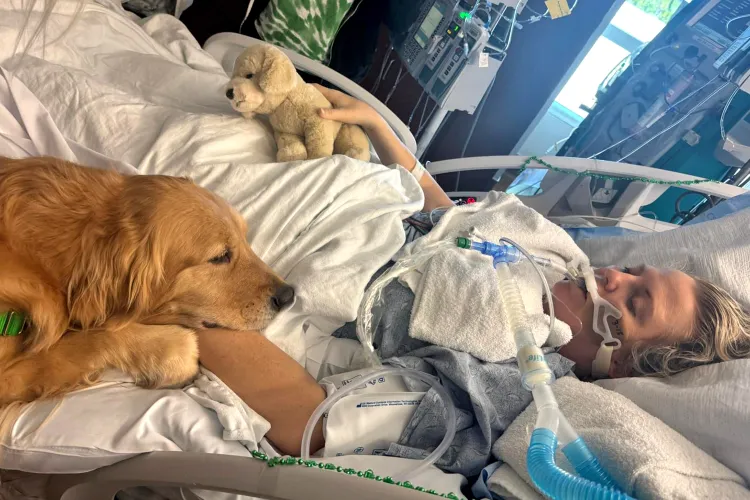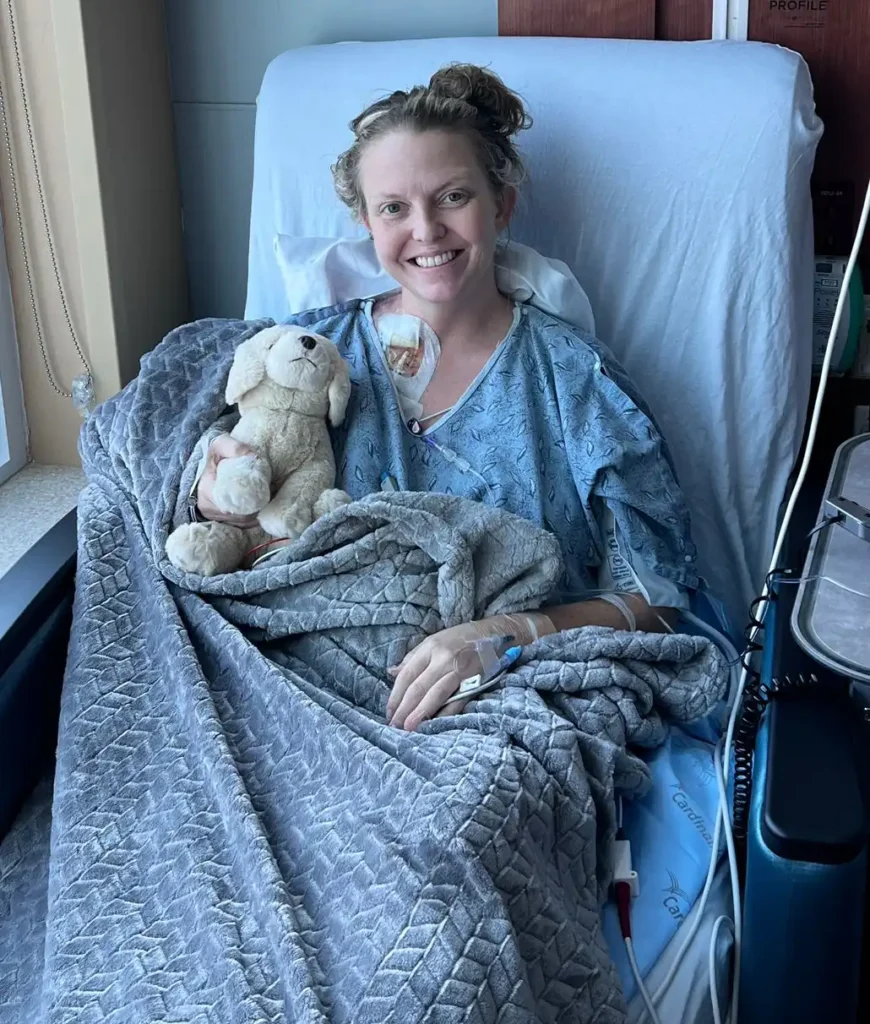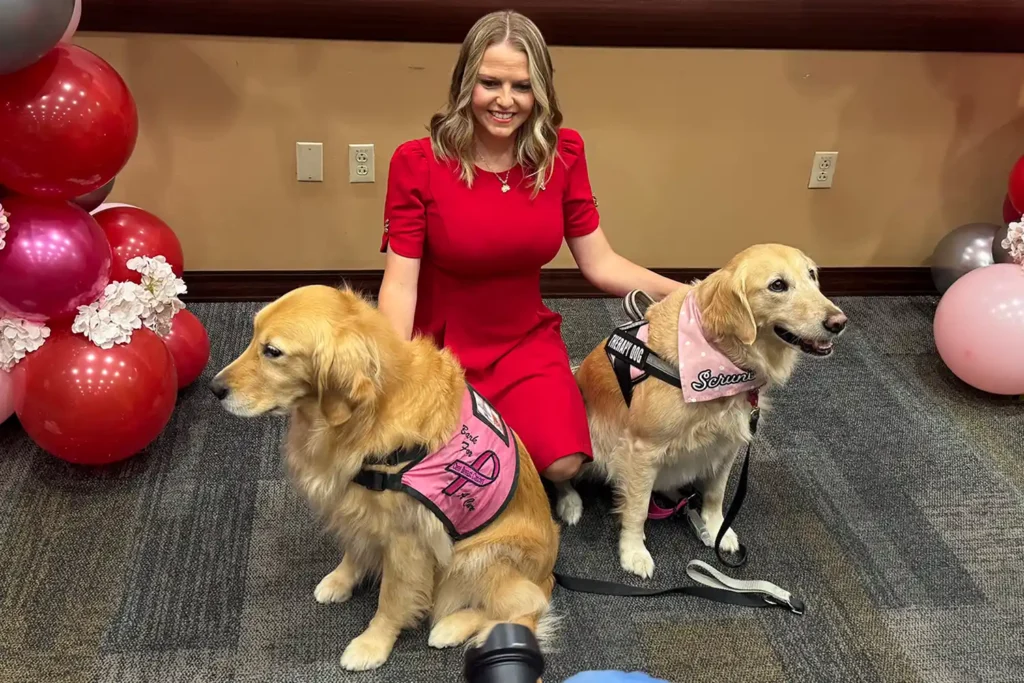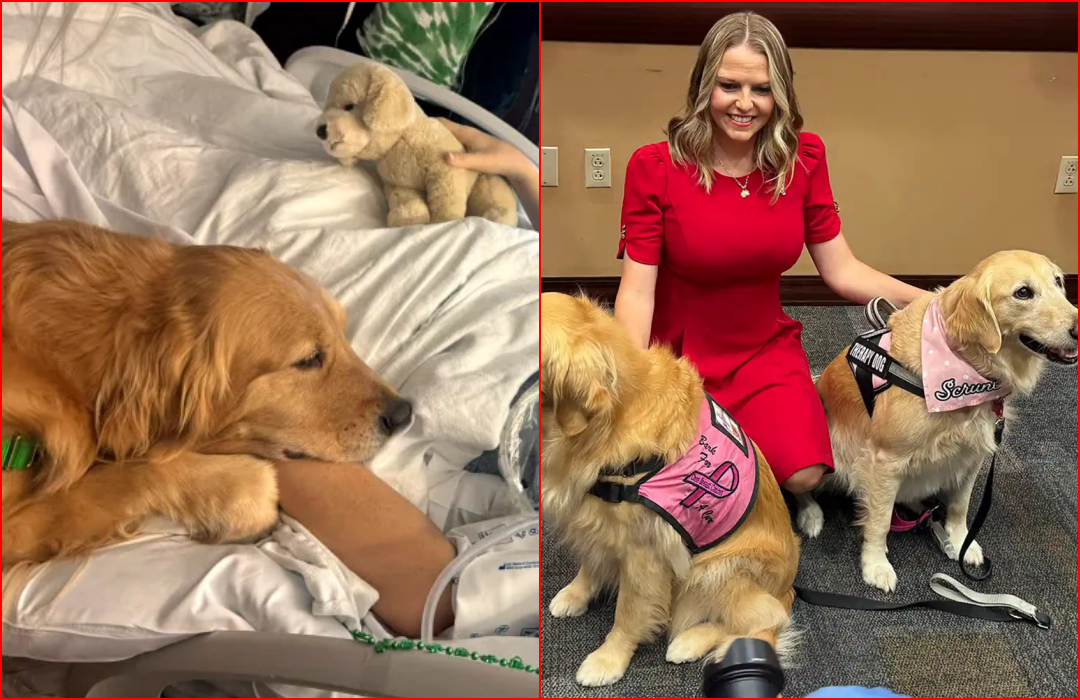In a quiet hospital wing in Pembroke Pines, Florida, hope was hovering at the edge of a whisper when a golden-retriever therapy dog nudged a nearly silent hand — and everything changed. This isn’t just a medical miracle; it’s proof that connection can emerge in the darkest hour, sparking life when the body seems lost to us.
A sudden turn for the worse

On March 13, 2025, 39-year-old Priscilla Timmons from Florida found herself in the worst possible scenario. She fainted in her home, later was diagnosed with a massive pulmonary embolism, endured three cardiac arrests, and suffered multi-organ failure.
Doctors told her family she had just a 10 % chance of survival.
The rescue team from Memorial Healthcare System managed to restore cardiac activity after 40 minutes of no contractility. Timmons was placed in a medically induced coma and remained hospitalized for 21 days in the ICU at Memorial Hospital West in Pembroke Pines.
The moment of awakening

During her coma, Priscilla said she heard voices but could not open her eyes or move. Then came the extraordinary moment: a therapy dog named Scrunchie, a golden retriever, visited with handler and, while searching for a treat, gently nuzzled Priscilla’s hand.
At that very moment she said she was able to lift her hand off the bed. It was a tiny movement — but for her caregivers and family, it marked the turning point. Later, she also met another therapy dog, Honey Crisp.
The role of therapy dogs in healing
Therapy dogs like Scrunchie and Honey Crisp are more than comforting companions — they’re bridges between consciousness and connection. Studies show animal-assisted interventions can reduce stress, stimulate awareness and encourage movement in patients with serious conditions. In Priscilla’s case, the dog’s visit coincided with her first visible response, suggesting that the scent, warmth and presence of a trained animal can trigger neural pathways or emotional responses even when the body appears shut down. Hospitals such as Memorial Hospital West incorporate animal-assisted therapy in their ICU or recovery wards because these encounters can provoke vital signs, social interaction and emotional shifts that traditional medicine sometimes can’t instigate alone.
Recovery and renewed purpose

After awakening, Priscilla’s lungs cleared fully — she was informed they were “100 per cent clear… as if nothing ever happened.”
Although she returned to the ER a few times for precautionary checks, she declared her second chance at life would not be wasted. She launched an Instagram awareness campaign called “Faith Flows Strong” to educate others about blood clots and recoveries.
She emphasized that faith and medicine go hand-in-hand, saying: “God told me to fight so I did with all my heart.” Priscilla later shared her experience in a video conference given at the hospital and posted to her Facebook page.
Why this story matters
This case stands out because it illustrates the interplay of acute medical crisis, human resilience and the subtle power of animal presence. When survival odds were at 10 %, and doctors were prepared for the worst, a therapy dog’s simple nudge sparked movement and hope. It underscores how care for critically ill patients is not solely about equipment and medication — it’s about connection, timing and sometimes, the gentle touch of an unlikely visitor. The setting — Memorial Hospital West in Florida — becomes a backdrop for a story of revival that goes beyond clinical parameters.
From the brink of despair to a hand raised in response, Priscilla Timmons’s journey reminds us that healing often involves more than science. In the hushed space of a hospital room, a dog offered more than comfort — it offered a sign of life.

Andrew Alpin from India is the Brand Manager of Doggo digest. Andrew is an experienced content specialist and social media manager with a passion for writing. His forte includes health and wellness, Travel, Animals, and Nature. A nature nomad, Andrew is obsessed with mountains and loves high-altitude trekking. He has been on several Himalayan treks in India including the Everest Base Camp in Nepal.






